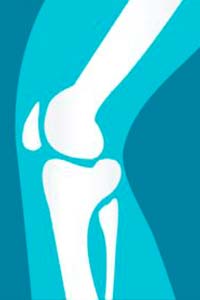Diagnostic Options in Your Hands
In-Office Arthroscopy Can Be An Alternative To MRI Study In Some Joint Injury Cases
For a long-time, the go-to for diagnosis of orthopaedic injuries of the shoulder and knee involved a magnetic resonance imaging (MRI) study. Developments in technology has allowed for a handheld miniature arthroscope, guided by a trained orthopaedic surgeon in-office, is now being used to obtain immediate visualization of shoulder and knee injuries. This in-office technique uses a needle arthrocope with an integrated camera and light source to conduct diagnostic exams. Prior to the procedure, a local pain anesthetic is applied to the area. During the in-office arthroscopy, a physician views real-time imaging on a high-definition tablet.
Why is there a need for an in-office, alternative to MRI’s?

The MRI machine is a long, body-sized, huge plastic tunnel with an enormous imaging pad that hovers just a few inches over the patient’s body during a study. Anxiety, prior to MRI’s have been reported to cause some people to develop a fear complex. For various reasons including claustrophobia in some cases, patients may be prescribed benzodiazepines like Xanax, Ativan or Valium by their doctors prior to these MRI studies. Benzodiazepines, though they have a calming effect, are highly addictive. In addition, some patients are unable to use MRI studies like those who have types of medical grade metallic items like defibrillators or pacemakers and other objects implanted in their body that will interfere with magnetic resonance used in MRI’s.
How long does it take for MRI results vs. an in-office arthroscopy?
In most cases, MRI scans are read by a radiologist within 24-hours. However, it could take days to get your MRI results. Typically, patients see a specialist about the ailment and are then sent for an MRI followed by a few days of waiting for results followed-up by another appointment with the original doctor’s office. This process can take days, even weeks, before treatment is decided. With an in-office arthroscopy the diagnosis is given in real-time. This type of immediacy allows the physician to get to the root of the problem quickly and decide on whether a surgical approach or non-surgical management is needed to heal the joint injury.
Is in-office arthroscopy safe and sanctioned by the Food & Drug Administration (FDA)?
Physicians using in-office arthroscopy are trained in operating this device. The original in-office arthroscope was approved in 2014. According
to Arthroscopy Techniques, Companion to Arthroscopy: The Journal of Arthroscopic and Related Surgery, a study published in the U.S. National Library of Medicine and National Institute of Health (NIH), small-bore needle arthroscopy has previously been
described as a cost-effective, alternative diagnostic tool with demonstrated similar efficacy and accuracy to MRI and standard arthroscopes.
Every patient and injury is unique. Finding the right diagnostic tools and treatment options should be tailored to the individual. Advancements have allowed for greater options.
Find an orthopaedic surgeon and sports medicine specialist who focuses in the type of injury and begin a tailored treatment plan to get back on the court or field again.
